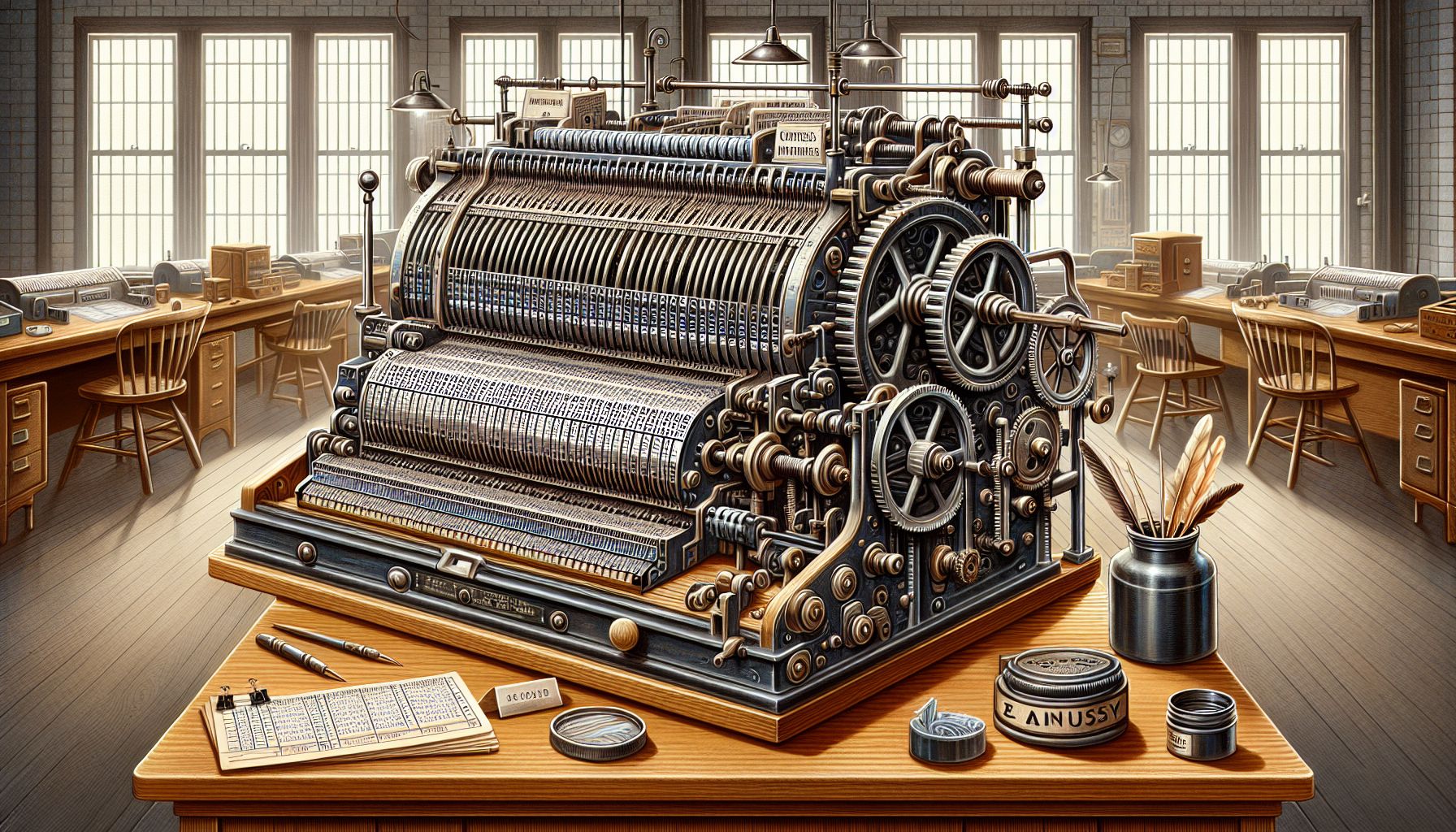📌 Let’s explore the topic in depth and see what insights we can uncover.
⚡ “Long before computers or calculators were even a concept, one man dared to revolutionize data processing in the late 19th century. Uncover the mind-blowing story of Herman Hollerith, the man who made the U.S. Census of 1890 possible with a piece of
Have you ever wondered how the U.S. Census Bureau managed to handle, process, and make sense of the vast amount of data collected during the census? 🤔 In this post, we’ll dive deep into the fascinating world of punch card tabulators, specifically focusing on the one developed by Herman Hollerith for the 1890 U.S. Census. This revolutionary device has been the stepping stone for data processing and analysis, ultimately shaping the digital world we live in today. To truly appreciate the punch card tabulator, we need to understand the context in which it was developed, the challenges it addressed, and the impact it brought. So, buckle up and get ready for a blast to the past as we explore the life and times of Herman Hollerith and his groundbreaking invention. 🕰️
📜 The Birth of an Idea: Herman Hollerith’s Inspiration

'Hollerith's Historic Punch Card Tabulator: 1890 Census'
Herman Hollerith, an American statistician and inventor, was born in 1860 in Buffalo, New York. He studied at the Columbia School of Mines and after graduation, he joined the U.S. Census Bureau. Working there, he quickly realized that the traditional method of manually counting and sorting census data was slow, tedious, and prone to errors. This was the impetus for Hollerith to think of a better, more efficient method of handling large volumes of data. Hollerith found inspiration in an unexpected place: the railroad. He observed how conductors punched different patterns into train tickets to indicate various attributes of the passenger. Drawing from this, he conceptualized a system where data could be recorded, stored, and sorted using punched cards.
🛠️ Herman Hollerith’s Punch Card Tabulator: The Mechanism Explained
Hollerith’s punch card tabulator was a mechanical marvel of its time. The system consisted of three main components:
**The punch
** This was used to create holes in the cards at specific locations, representing different data attributes.
**The tabulator
** This was a large, desk-sized machine that could read the punched cards and tabulate the results.
**The sorter
** This sorted the cards into different groups based on the punched holes. The genius of Hollerith’s system was its simplicity and efficiency. Data was recorded by punching holes in a card, with the location of the hole representing a specific piece of information. For example, a hole at a specific location might indicate a male respondent, while a hole at a different location might indicate a female respondent. This allowed the census data to be recorded, sorted, and counted quickly and accurately. Census takers would collect data from households and then punch this information into the cards. The punched cards were then fed into the tabulator, which used a set of spring-loaded needles to read the holes. Each needle corresponded to a specific hole location, and when the needle passed through a hole, it completed an electrical circuit that advanced a dial on the tabulator’s front panel. In this way, the tabulator could count the number of occurrences of each type of data.
💡 The Impact of Hollerith’s Punch Card Tabulator on the 1890 U.S. Census
Hollerith’s punch card tabulator was put to the test in the 1890 U.S. Census. The results were nothing short of remarkable. The 1880 Census had taken nearly 7 years to process, but with Hollerith’s system, the 1890 Census was processed in just 18 months, despite a significant increase in population. The punch card system not only expedited data processing but also facilitated more complex analysis. For example, it enabled statisticians to cross-tabulate data, meaning they could analyze the relationship between two or more data points. This was a game-changer as it allowed for much more nuanced and in-depth analysis of the census data. Moreover, Hollerith’s invention wasn’t just a one-hit-wonder. It was the precursor to modern-day data processing and paved the way for future developments in computing technology. In fact, Hollerith later founded the Tabulating Machine Company, which eventually became a part of the corporation we know today as IBM.
🧭 Conclusion
Herman Hollerith’s punch card tabulator was a revolutionary invention that dramatically transformed data processing during the 1890 U.S. Census. It sped up the census process, minimized errors, and enabled in-depth data analysis. More importantly, it marked the dawn of a new era in data processing and computing, laying the groundwork for the digital world we live in today. From a broader perspective, Hollerith’s story reminds us that inspiration can come from the most unexpected places – in his case, a simple train ticket. It’s a testament to the power of innovative thinking and how a simple idea, when applied creatively, can bring about groundbreaking changes. So next time you’re faced with a seemingly insurmountable problem, remember Hollerith and his punch cards. Who knows? The solution might just be a punch away! 💡
🌐 Thanks for reading — more tech trends coming soon!
